Gender and Inclusion
Gender, age, abilities and other individual or context-specific characteristics present different opportunities and challenges to provide CVA to people in crisis in a dignified manner.
Among humanitarian actors, there is an increasing acknowledgement of the specific needs and constraints of people of differing abilities, older people, people of different genders, particularly women, and people on the move. Alongside this is a growing appreciation of the need for tailored and sensitive measures that ensure their effective inclusion.
Supporting the needs of diverse people with CVA goes beyond making them a target group; it is about meaningful engagement, purposive design and implementation, and programme adjustment to meet different groups’ needs with dignity. Inclusive approaches go hand in hand with people-centred aid.
Current priorities
The CALP Network will continue to encourage cash actors to widen their focus to be more inclusive and champion a fuller understanding of how CVA can go beyond the notion of ‘do no harm’ towards appropriately addressing the needs of diverse people in safe and dignified manners.
We will work to elevate the experiences and initiatives on CVA and gender, disability inclusive CVA, working with different ethnicities and cultural identities, minority groups, people with diverse sexual identities, and age groups.
CALP will also strive to make its work as accessible as possible.
Featured content

Collected Papers on Gender and Cash Transfer Programmes in Humanitarian Contexts
Report
Existing gender inequalities mean that disasters and conflicts impact women, men, girls and boys differently. Cash based assistance is one of the most significant developments in humanitarian assistance in recent years. But the relationship between gender and cash based assistance in humanitarian contexts is poorly understood. All too often, interventions are designed based on assumptions...

Microlearning video: CVA and Gender
Blog Post
This video provides an overview of the relationship between gender and cash and voucher assistance (CVA) structured around the humanitarian project cycle, which include: Assessment and response analysis: How to adjust the assessment processes to achieve a more accurate reflection of gender and markets. Design and implementation: How to use methods and protocols to reduce the potential...
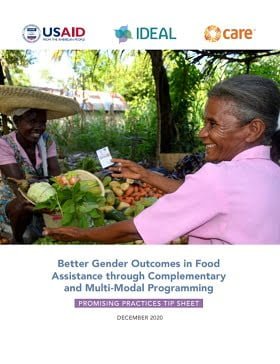
Better Gender Outcomes in Food Assistance through Complementary and Multi-Modal Programing: Promising Practices Tip Sheet
Guidelines and Tools
This Tip Sheet is excerpted from the research report, “Better Gender Outcomes in Food Assistance through Complementary and Multi-Modal programming,” and gives promising practices by the cycles of project cycle management, as well as at the response level. Additionally, there are expert tips and wisdom practices that support the use of a gendered approach in development or humanitarian...

Cash & Voucher Assistance and Gender-Based Violence Compendium
Guidelines and Tools
The Compendium is intended as a companion to the 2015 Inter-Agency Standing Committee (IASC) Guidelines for Integrating Gender-Based Violence Interventions in Humanitarian Action and its companion resource, the GBV Pocket Guide. The guidance was developed through the efforts of 15 organizations who contributed expertise in the inception, design and review of the document. The process was led...
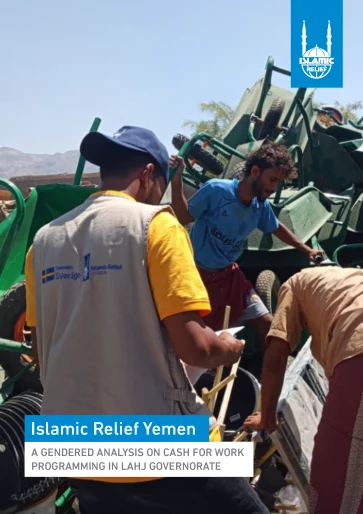
A Gendered Analysis on Cash for Work Programming in Lahj Governorate
Case Study
Cash for Work (CFW) programmes are designed to help the most vulnerable people meet their essential and basic needs. In Yemen, CFW interventions are responding to an ever-growing proportion of the Yemeni population that are in need of humanitarian assistance. Working with communities in the targeted areas of Hudayda and Lahj, the Swedish International Development Cooperation Agency SIDA-funded...
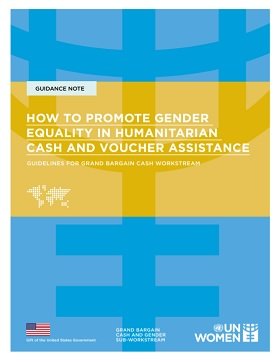
How to Promote Gender Equality in Humanitarian Cash and Voucher Assistance
Guidelines and Tools
The use of cash and voucher assistance (CVA) in humanitarian action is increasing rapidly.
With this rise, there is also growing demand by stakeholders to ensure CVA is more gender-responsive, addressing gender gaps and moving towards greater gender equality.
Gender-responsive CVA, which recognizes existing disparities and addresses the needs of all crisis-affected people equally, has the...
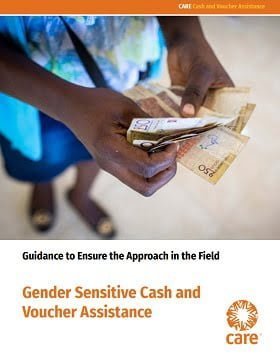
Gender-Sensitive Cash and Voucher Assistance: Guidance to ensure the approach in the field
Guidelines and Tools
This guidance builds on CARE’s ambition-via practice, research, evidence on CVA–and aims to support the application of gender sensitive CVA throughout the project cycle and at the response level. It is divided into two sections: – Part A: ‘What has been learned about gender sensitive CVA?,’ briefly explains the recommendations that came from the research. – Part B: ‘How do we...

Enablers and Gaps: Gender Equality, Gender-Based Violence Response and Mitigation in Cash and Voucher Assistance at Response levels: analysis on three case studies
Report
The Gender and Cash Sub-Workstream identified three case studies that illustrate how Cash Working Groups, GBV Sub-Clusters, gender focal points (e.g. Gender in Humanitarian Action Working groups at country and regional level) and humanitarian partnerships can enable meaningful and wider engagement on gender equity and GBV response in CVA. The case studies all show different aspects of linking...

How to mitigate gender-based violence (GBV) risks in cash and voucher assistance (CVA)
Video
Cash and voucher assistance (CVA) is an important tool to help individuals affected by crises get back on their feet. But just like any other form of assistance, it is vital to ensure that it does not fuel tensions in the household or in the community and that it does not create new risks for women and girls. Fortunately, there are a variety of ways that cash actors can work to mitigate risks...

Inclusive Information Systems for Social Protection: Intentionally Integrating Gender and Disability
Policy paper
Digital information systems serving the social protection sector, and especially social assistance, are increasingly prominent and will continue to be, as is the case within all other sectors. “Why? Because the ability of a country to care for its people and respond to their lifecycle needs depends on its ability to identify those who are in need, enroll them, provide tailored benefits and...
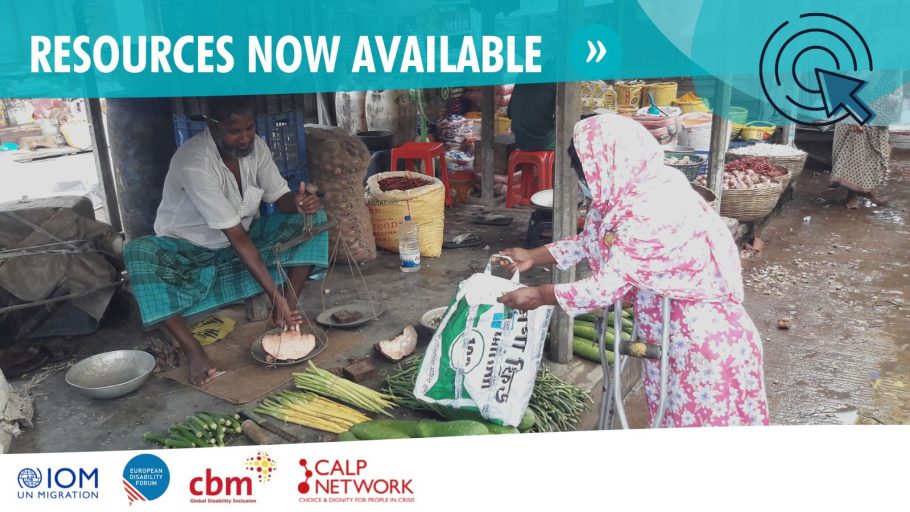
Mainstreaming disability inclusion into humanitarian CVA
Presentation
What is a rights-based approach to disability? How can disability inclusion be mainstreamed to ensure more inclusive and effective CVA humanitarian responses? To answer these key questions, CALP, CBM Global, European Disability Forum and International Organization for Migration (IOM), came together to organize the webinar “Mainstreaming disability inclusion into humanitarian CVA”, with the...
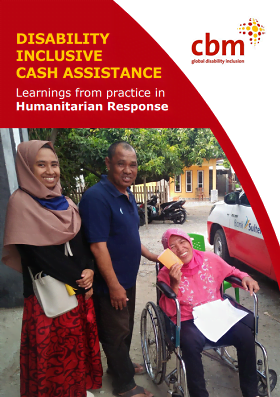
Disability Inclusive Cash Assistance: Learnings from Practice in Humanitarian Response
Guidelines and Tools
This case study collection describes lessons learned from seven inclusive humanitarian cash transfer projects implemented from 2015 – 2020 in Niger, Zimbabwe, Pakistan, Bangladesh, Philippines, and Indonesia, and five ongoing projects from the 2020 Covid-19 pandemic responses. This good practice collection aims to benefit both humanitarian practitioners engaged in Cash Based Interventions...
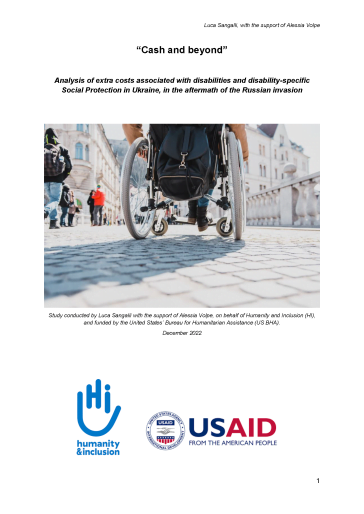
Cash and beyond – Analysis of extra costs associated with disabilities and disability-specific social protection in Ukraine, in the aftermath of the Russian invasion
Report
Following the escalation of the conflict in Ukraine in February 2022 and the consequent humanitarian crisis, the country has experienced active fighting and massive displacement, both within and outside its borders. Persons with disabilities and older persons have been facing particularly harsh effects, especially for those with more severe forms of disabilities, who encountered challenges in...
Thematic lead
Latest

Cash & Voucher Assistance (CVA) & Child Protection (CP) Global Study – Research Report in the DRC, Egypt, Lithuania and the Philippines
Report
Since 2022, Save the Children has been scaling up its use of CVA for Child Protection (CP) programming through various pilot projects.
Research was commissioned in four countries in 2022-23 to generate evidence and learning to inform the design of future programming but also to design a robust...
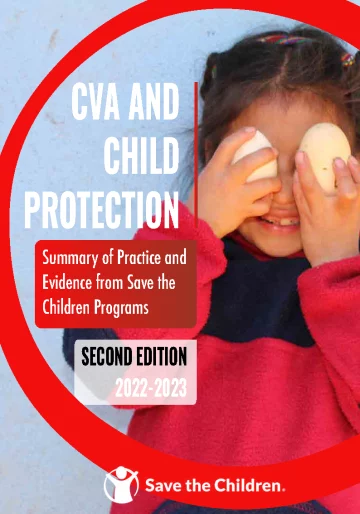
Cash and Vouchers Assistance (CVA) and Child Protection: Summary of practice and evidence from Save the Children programmes 2023 Edition
Report
In an effort to increase global knowledge and learning, Save the Children conducted a global review of twenty Country Offices and their programs in order to assess and highlight the impact that different forms of Cash and Vouchers Assistance (CVA) have on Child Protection (CP) outcomes, to identify...

Locally Led Anticipatory Action Guide and Toolkit
Guidelines and Tools
How civil society organisations can engage with communities, and collaborate with mandated, technical and donor agencies to localise and scale up early warning and early action
The purpose of the guide is to support civil society organisations to engage with communities and other actors and structures...

Addressing Negative Socioeconomic Impacts of the COVID-19 Pandemic through Social Protection in Viet Nam – Supporting incomes and livelihoods with cash assistance in Dong Nai province
Case Study
In late April 2021, Viet Nam faced its fourth wave of COVID-19, with over 895 000 new cases reported. COVID-19 and related restrictions hindered livelihood options and vulnerable households faced financial stress to cover basic needs. Some of them lost their income and were unable to return to home...

Philippines Cash and Voucher Assistance (CVA) and Child Early and Forced Marriages and Unions (CEFMU): Program Summary and Evidence-Building Infographic
Case Study
This infographic gathers key programmatic data from Save the Children CVA operations in the Philippines between January and August 2023, which aimed to assess and highlight the impact that CVA has on child protection outcomes, with a specific focus on Child Early and Forced Marriages and Unions (CEFMU).

Just in Time: Advancing anticipatory cash in Pakistan
Guidelines and Tools
Cash and voucher assistance in humanitarian response has grown significantly in recent years, with evidence showing that it supports the agency of recipients, reduces harmful coping strategies, supports local economies, and is a cost-effective form of humanitarian assistance.
The use of cash as a form...

Impact Evaluation of Cash-Based Transfers on Food Security and Gender Equality in El Salvador
Case Study
1. Gender inequality is pervasive, particularly in developing countries such as El Salvador, and its potential welfare implications are concerning. In El Salvador, only 45.4 percent of women participate in the labour market, in contrast to 74.4 percent of men. 2. Economic development, gender equality in...

Will our Opinion Matter? Community consultations on the design of multi-purpose cash programmes in Lebanon
Report
Since late 2019, Lebanon has been grappling with a severe economic and financial crisis. The Lebanese lira has lost more than 98 percent of its value, and over half of the Lebanese population is estimated to be living in poverty. The Government of Lebanon and development and humanitarian agencies have...

Ensuring Inclusive Cash and Voucher Programming in Vanuatu
Report
Save the Children is expanding its cash and voucher programming in Vanuatu; helping families to overcome financial barriers to improve outcomes for their children and advocating for investments in a national social protection system.
This report presents the findings of a Gender Equality, Disability...
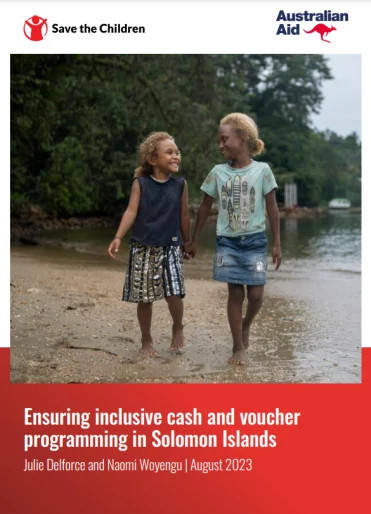
Ensuring Inclusive Cash and Voucher Programming in Solomon Islands
Report
Save the Children is expanding its cash and voucher programming in Solomon Islands; helping families to overcome financial barriers to improve outcomes for their children and advocating for investments in a national social protection system.
This report presents the findings of a Gender Equality,...
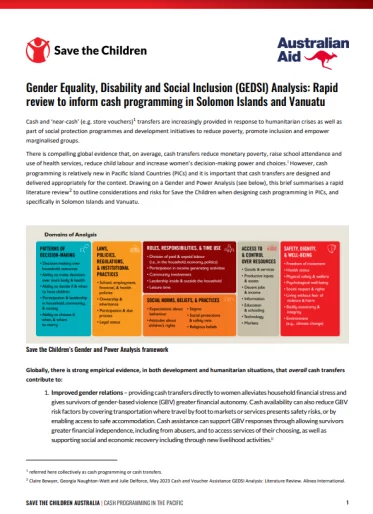
Gender Equality, Disability and Social Inclusion (GEDSI) Analysis: Rapid review to inform cash programming in Solomon Islands and Vanuatu
Report
There is compelling global evidence that, on average, cash transfers reduce monetary poverty, raise school attendance and use of health services, reduce child labour and increase women’s decision-making power and choices. Cash programming though, is relatively new in Pacific Island Countries (PICs) and...

Feasibility study on CVA in Tigray Region, Ethiopia_October 2023
Report
The two years of conflict in Tigray has fueled a large-scale humanitarian crisis and resulted in loss of livelihoods and widespread food insecurity of the population especially Internally Displaced Populations and agrarian communities in the region.
The crisis affected the livelihoods of the...

WVI Cash Roadmap 2.0 – New Avenues – Leveraging, multiplying “Nexus” cash to take children and their families further than imagined
Policy paper
WVI's strategic global Cash Roadmap 2.0 (2024-2027) speaks to the organisations' commitment that amidst polycrises and resourcing constraints, there is urgency to maximise and multiply World Vision's capabilities, assets and cash voucher programming (CVP=CVA) is a powerful tool to do so.
Increasing...

Gender-Transformative Social Protection in Crisis Contexts: Guidance note
Guidelines and Tools
This guidance note is produced under the Social Protection Technical Assistance (STAAR) facility which is funded by FCDO and implemented by DAI Global UK. It was commissioned by GiZ on behalf of the German Federal Ministry for Economic Cooperation and Development (BMZ) to advance the international...

Exploring GBV Risk Mitigation in Iraq and Colombia
Case Study
In 2022, UNFPA and the Global Women’s Institute (GWI) at George Washington University undertook operational research in Iraq and Colombia with the goal of developing proxy indicators for mitigating GBV risk to women who receive cash assistance. Proxy indicators for detecting GBV risks to women in cash...

What’s Next for Cash: Mercy Corps’ approach to cash and voucher assistance
Presentation
The brief outlines Mercy Corps' CVA approach & standards applied across our CVA portfolio and sets the direction for CVA in Mercy Corps moving forward.
The approach outlines how CVA contributes to Mercy Corps Pathway to Possibility strategy by focusing on areas that drive impact & sector leadership,...

Building Capital in Crisis: How women in CARE’s VSLAs in Emergencies increase savings and solidarity
Report
Since 2017, CARE has piloted and refined our VSLA in Emergencies model to reach people in need of humanitarian assistance and provide an approach that can reduce long term vulnerability while being more sustainable. In this second report on our pilot research, we provide insights from three pilots in...

Humanitarian Cash Transfers and Intimate Partner Violence in South Sudan
Case Study
Cash-based programming, an intervention commonly provided to people affected by humanitarian crisis, has the potential to affect IPV positively or negatively. This study, however, found no evidence that this cash-based project had any significant effect on IPV. However, the relationship between cash...

“Men have the power to say everything, women don’t.” Women’s perceptions of cash and voucher assistance in Maiduguri’s outskirts
Case Study
In northeast Nigeria, women and girls constitute approximately two-thirds of cash and voucher assistance (CVA) recipients. However, stark gender inequalities in the region make it difficult to hear women’s perspectives. This study aims to amplify their voices and concerns to inform decision-making...

Impact Evaluation of Cash-Based Transfers and Gender in Kenya: Inception report
Guidelines and Tools
Gender inequality in economic autonomy is pervasive, particularly in developing countries, and its potential welfare implications are concerning. The World Economic Forum’s (WEF) Global Gender Gap Report for 2022 ranks Kenya as 57th for the Gender Gap on Economic participation, and an opportunity index...



